Additional notes (click to expand)
Commemorative
The genus Fuchsia (as Fuchsia triphylla) was discovered by Charles Plumier (1646–1704) in Hispaniola in 1696/7, and the genus named by him for Leonhart Fuchs (1501–66) in 1703. Fuchs was born in Bavaria and obtained his MA in Greek, Latin, Hebrew and philosophy in 1521 and his MD at the University of Ingolstadt in 1524. He practised in Munich, became professor of medicine at Ingolstadt in 1526, and went to the University of Tübingen in 1533, setting up its botanical garden in 1535. This was still the era before ‘botany’; the study of plants being considered a branch of medicine and pharmacy. He followed the writings of Dioscorides, Hippocrates and
Galen; Fuch’s magnifi cent herbal, De historia stirpium commentarii insignes (Notable commentaries on the history of plants, 1542), attempted the identifi cation of the plants used by these earlier writers. It also contained the first accounts of maize, Zea mays, and chilli peppers, Capsicum annuum, recently introduced from Latin America. Surprisingly he was also the first person to publish an account and woodcuts of foxgloves, Digitalis purpurea and D. lutea. The book contains 500 descriptions and woodcuts of medicinal plants, arranged in alphabetical order, and
relied heavily on the De materia medica (c. AD 70) of Dioscorides. He was a powerful infl uence on the herbals of Dodoens, and thence to Gerard, L’Escluse and Henry Lyte. A small quarto edition appeared in 1551, and a twovolume facsimile of the 1542 edition with commentary and selected translations from the Latin was published by Stanford Press in 1999. The original woodcuts were
passed from printer to printer and continued in use for 232 years (Schinz, 1774).
Oakeley, Dr. Henry. (2012). Doctors in the Medicinal Garden. Plants named after physicians. Royal College of Physicians. page 60
link
Horticulture
Grows in forests and open areas with light shade in Chile where it is pollinated by hummingbirds which visit it for nectar. At the extreme southern end of its geographic range hummingbirds are less common and pollination is reduced by 20% by the presence of nectar robbing birds such as Sephanoides galeritus. These chew the base of the flower and in so doing may damage the ovary, preventing seed production. F. magellanica in forest habitats are visited more frequently by hummingbirds, and less by nectar robbing birds, the reverse occurring in plants growing in the open. Forest plants have the greater seed set.
Traveset, A et al (1998) Effect of nectar robbing birds on fruit set of Fuchsia magellanica ...Functional Ecology 12:459-464 internet
Medicinal
Diuretic, febrifuge.
Plants for a Future (2016) at www.plantsforafuture.org.uk http://www.pfaf.org/user/Plant.aspx?LatinName=Fuchsia+magellanica
link
Other use
Fuchsia magellanica Lam. Onagraceae. Hardy fuchsia. Semi-hardy shrub. Distribution: Mountainous regions of Chile and Argentina where they are called 'Chilco' by the indigenous people, the Mapuche. The genus was discovered by Charles Plumier in Hispaniola in 1696/7, and named by him for Leonhart Fuchs (1501-1566), German Professor of Medicine, whose illustrated herbal, De Historia Stirpium (1542) attempted the identification of the plants in the Classical herbals. It also contained the first accounts of maize, Zea mays, and chilli peppers, Capsicum annuum, then recently introduced from Latin America. He was also the first person to publish an account and woodcuts of foxgloves, Digitalis purpurea and D. lutea. The book contains 500 descriptions and woodcuts of medicinal plants, arranged in alphabetical order, and relied heavily on the De materia medica (c. AD 70) of Dioscorides. He was a powerful influence on the herbals of Dodoens, and thence to Gerard, L’Escluse and Henry Lyte. A small quarto edition appeared in 1551, and a two volume facsimile of the 1542 edition with commentary and selected translations from the Latin was published by Stanford Press in 1999. The original woodcuts were passed from printer to printer and continued in use for 232 years (Schinz, 1774).
Oakeley, Dr. Henry F. (2013). Wellcome Library notes.
link
Fruit - raw. A juicy berry (although it is not very palatable). A black dye is obtained from the wood.
Plants for a Future (2016) at www.plantsforafuture.org.uk http://www.pfaf.org/user/Plant.aspx?LatinName=Fuchsia+magellanica
link
Geographical distribution
- Southern America, Southern South America, Argentina Northeast
- Southern America, Southern South America, Argentina Northwest
- Southern America, Southern South America, Argentina South
- Southern America, Southern South America, Chile Central
- Southern America, Southern South America, Chile North
- Southern America, Southern South America, Chile South
Fuchsia magellanica Lam.
Family: ONAGRACEAEGenus: Fuchsia
Species: magellanica Lam.
Common names: Fuchsia; Lady's Eardrops
Distribution summary: Chile, Argentina
Habit: Shrub
Hardiness: H4 - Hardy; average winter
Habitat: Understorey and margins of evergreen forest
Garden status: Currently grown
Garden location: Southern Hemisphere Wolfson bed (N)
Flowering months: April, May, June, July
Reason for growing: Commemorative
.JPG)
.JPG)

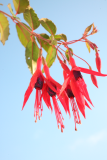
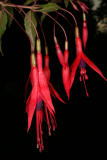
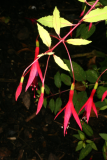
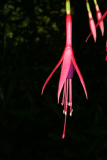
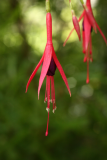
.JPG)